Bonghwa’s Seongnae-cheon River noted for First-class Water
Mayor Park No-wook of the Bonghwa County of Gyeongsangbuk-do, some 152 miles southeast of Seoul, hosts the 2014 Euneo (Sweetfish) Festival on the bank of the crystal-clear Naeseong-cheon River for an eight-day run?staring on July 26, 2014 and ending on August 2.
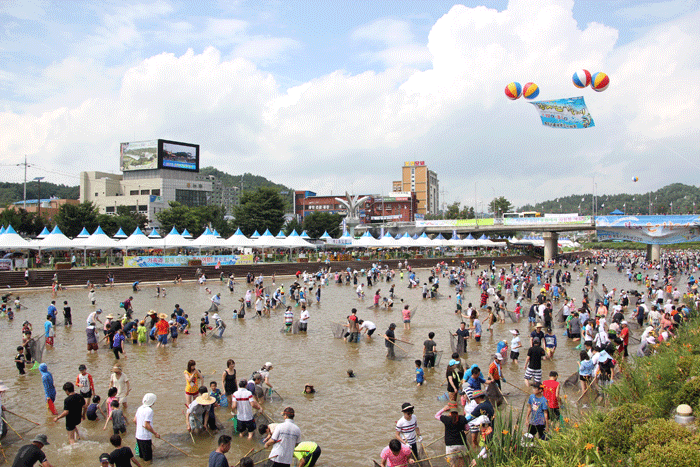
The Festival, which started in 1999, has since grown by leaps and bounds in terms of the scale of event and number of participants, scoring over 900,000 visitors last year and winning the Central Government designation of the ‘Best Summer Festival of the Republic of Korea’ after winning the title of ‘Promising Festival’ for four consecutive years by the Ministry of Culture, Sports and Tourism from 2011.
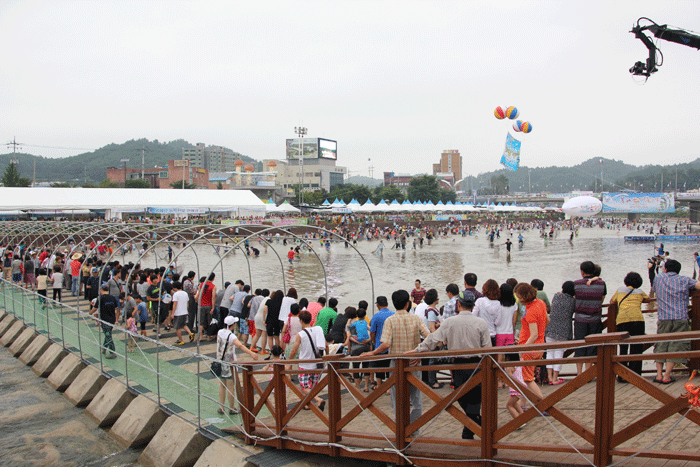
There are many interesting events taking place during the Festival. They include Sweetfish catching with a scoop net or barehanded, Water Game Festival and Naeseong-cheon Water War.
A lot of sweetfishes are released into the river and there is a good chance for everyone to catch a good number of sweet fish.

There also is a barbeque site where the catchers can have their sweetfish roasted on a grill on a charcoal fire.
The Water Game Festival features ‘Water Cannon Firing’ where water is shot into the sky from fire engines on the ground and from the air.
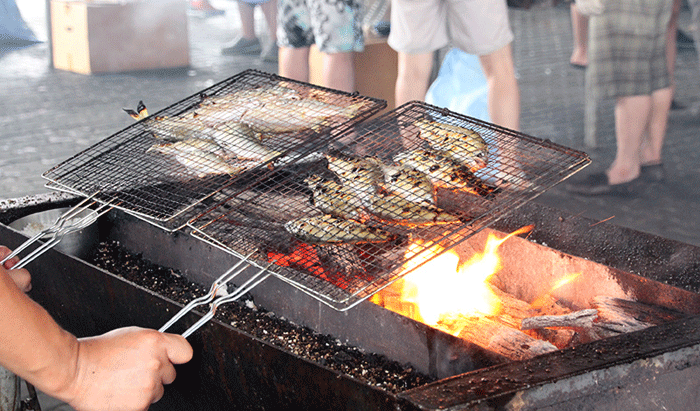
The Naeseong-cheon Water War includes running in the water, tug-of-war in the water and crossing the river hopping on buoys.
At the Sweetfish Theme Exhibition Hall, the guests can have a rare chance to look around all species of shallow-water fish.
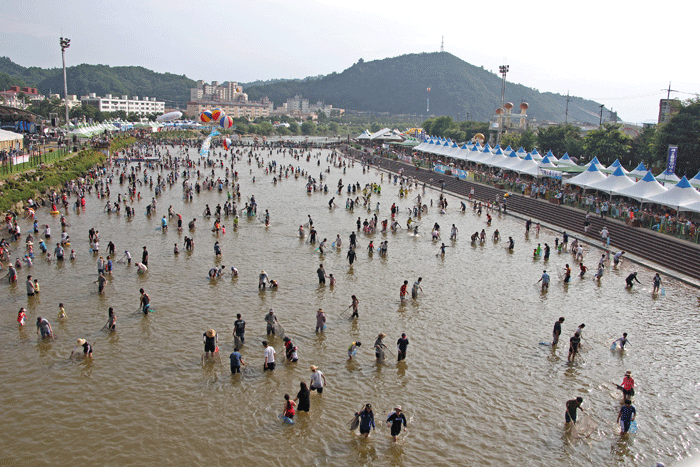
Then there is the Topiary Photo Zone, Yudeung Candle Light Floating on the River and Angels’ Lantern Street.
There also are performances presented by top singes such as Ms. Hyun Sook, Ms. Kum Jandi (real name Park Su-yeon), Bae Il-Ho, B2B and Wassup Vocal Group.
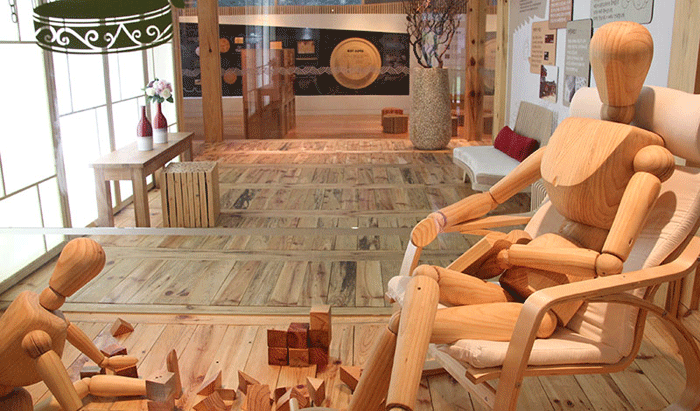
There also are interesting programs during the Festival period and among them are KBS TV National Singing Contest, Bus Tour of Cultural and Historical Sites, Wood Art Fair, Muai Thai Martial Art and Bonghwa Water Park.
On the Main Festival Venue on the river bank are traditional Korean food booths, special agricultural products exhibition-sales booths, Euneo Sweetfish dining houses, Well-being Euneo Sweetfish restaurants, Children’s Paddling Pool, Shower Sites, Shaded Rest Areas and various convenience facilities for the visitors.

The Euneo Sweetfish fishing either barehanded or with scoop nets takes place three to five times a day where each participant pays 10,000 won (US$10). However, the participants receives in return a free coupon valued at 4,000 won (US$4) which the participant can use at any sales booths and/or stores at the restaurants, supermarkets or gas stations within the area of Bonghwa County throughout the entire period of the Festival.

According to Director Park Nam-joo of the Culture-Tourism Section of the Bonghwa County Government, Bonghwa is a forest rest and recuperation town located between the densely wooded Taebaek Mountain Range and the Sobaek Mountain Range, where the Naeseong-cheon River cuts through the town in the middle with crystal-clear water classified as Ilgeupsu (First-class Water).

The Naeseong-cheon River of the Bonghwa County is also the origin of the Han River that runs through Seoul, the capital city of the Republic of Korea, and empties into the Incheon Bay and also of the Nakdong River that meanders through the southeastern region of Korea and empties into the Sea of Busan, Korea’s largest port city.
Euneo, or Sweetfish, lives only in the First-Class (cleanest) water that is found the Bonghwa County and in a limited number of other localities in Korea.
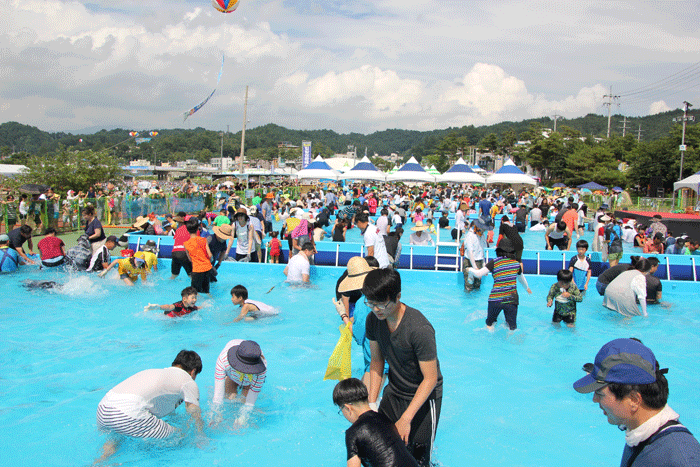
Before the construction of the dams in the Nakdong River on the lower reaches of the Naeseong-cheon River, the fully grown sweetfish swam 1,300 Ri (520km) back up to the cleanest water of the Naeseong-cheon River from September to October each year to lay eggs there. The eggs hatch and the fries swim down along the lower reaches of the Naeseong-cheon River, join the Nakdong River and enter the seas. The grown-up sweetfish then come back to the Seongnae-cheon River from March to April and live in the cleanest water. The Bonghwa Euneo (Sweetfish) Festival was established originally on the theme of “Bonghwa: Home of the Euneo Sweetfish.”
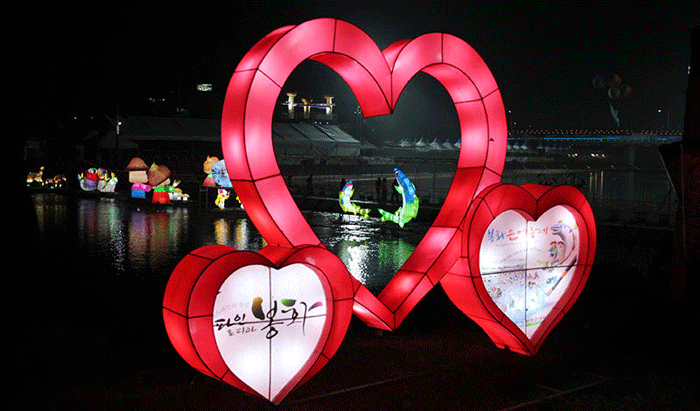
The name of the Sweetfish, Euneo, derives from Eun (Silver) and Eo (Fish) and thus Euneo is originally a ‘Silver fish’ as it was silver-colored and turned the entire river water into the color of silver in the past.
In fact, the Bonghwa County is originally noted as the habitat of Yeolmokeo (Lenok), also known as Manchurian trouts, which lives only in the First-Class (cleanest) water. Yeolmokeo, however, is a National Monument Fish and is protected by the law.
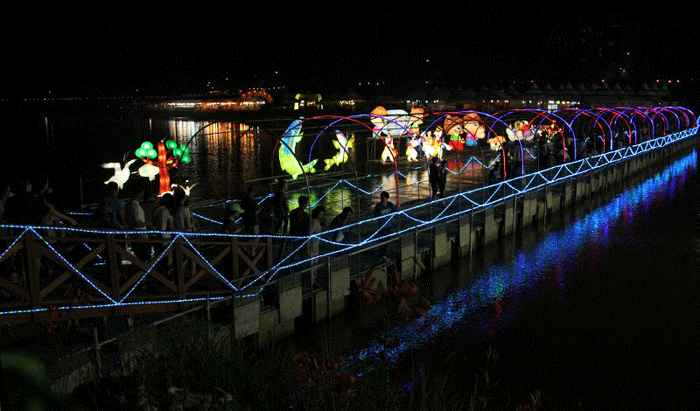
The Euneo (Sweetfish) Festival was established on the notion of the First-class (cleanest) Water of the Bonghwa County which offers habit for both the Yeolmokeo (Manchurian trouts) and Euneo (Sweetfish).
In any case, the Euneo (Sweetfish) Festival turned out to be one that lays Golden Eggs substantially contributing to the revitalization of the local economy.

Tourist attractions of Bonghwa County:
Cheongam-jeong (Old House of Chungjae Gwon Beol): Also known as Daksil, this is a historic site of Gwon Beol (1478-1548), an important cabinet minister of the period of rule by King Jungjong of the Joseon Dynasty. Cheongam-jeong was personally built by Chungjae Gwon Beol and Seokjeon-jeongsa was built by Cheongam Gwon Dong-bo, the eldest son of Chungjae, which are preserved here. The surrounding area is filled with dense pine forests and beautiful rocks. In Taengniji, a book of geography, Lee Jung-hwa, a scholar of the positive school of thinking during the middle years of the Joseon dynasty, recorded this area as one of the most remarkable scenic spots in Korea.
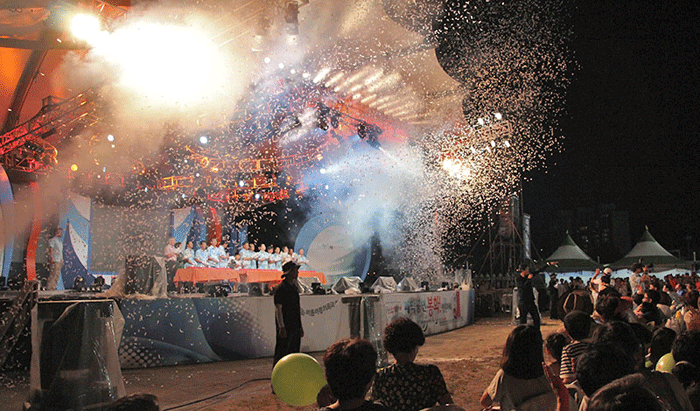
Mt. Cheongnyang Provincial Park: With the magnificent views of the nature, this celebrated mountain has been called a 'Small Mt. Kumgang’ since ancient times. The odd-shaped rocks and cliffs form a total of 12 peaks. Nakdong River originating from Mt. Taebaek flows through the majestic valleys. There are 27 Buddhist temples and sites of Buddhist monks' cells. In addition, Mt. Cheongnyang also has numerous historical sites and remains, such as Yuribojeon built by the Great Priest Wonhyo, Cheongnyang Jeongsa where Great Joseon Dynasty Scholars Toegye and Yi Hwang compiled the Doctrines of Sung Confucianism.
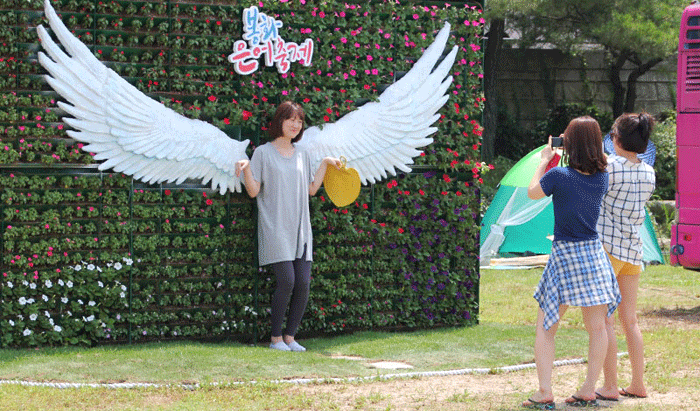
There also are Gowundae holding the remains of Choi Chi-won, Gimsaenggul Cave where Kim Saeng studied calligraphy, the House of King Gongmin, which was a hiding place of King Gongmin, and a mountain fortress. Mt. Cheongnyang was designated as the Provincial Park in 1982.
Haneuldari Bridge: Measuring 90 meters in length, this bridge was built at the height of 70m connecting Seonhak Peak to Jaran Peak located at 800 meters above sea level. As the largest suspension bridge in Korea, Haneuldari Bridge is also located at the highest point in Korea.
Teokgeolbawi Rock: Nakdong River meanders around the odd-shaped rocks of Oecheongnyang. Teokgeolbawi Rock is associated with an old tale that General Lim held on to this rock and chinned himself up while crossing a river during the Manchu War. Early spring, royal azaleas bloom along the riverside, creating a magnificent spectacle to behold.
Milseongdae: This is was a site for executing criminals while King Gongmin of the Goryeo Dynasty took refuge in this mountain. The walls are rugged and irregularly shaped.
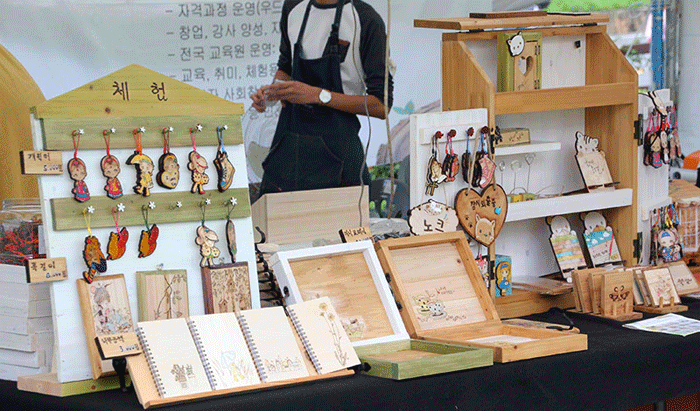
Milseongdae: Geumtap Peak consists of nine layers of cliffs forming a spectacle soaring through the clouds. Underneath the peak, four sites of monks' cells and Chongnyeongsu Spring are located.
Dongpungseok Rock: On top of a cliff at the back of Eungjin-jeon Temple where the Great Priest Wonhyo stayed to practice asceticism, a round rock sits dangerously as if about to fall in wind. Hence, this rock is named Dongpungseok Rock.
Mt. Cheongnyang Museum: Measuring 1,272 square meters, this three-storied museum is used to collect, preserve, study and exhibit data relating to Mt. Cheongnyang. Publicity center is located on level 1, storage and exhibition area on level 2 and observatory and rest area on level 3. Mt. Cheongnyang Museum is a space to study and learn about the history and natural ecology of Mt. Cheongnyang.
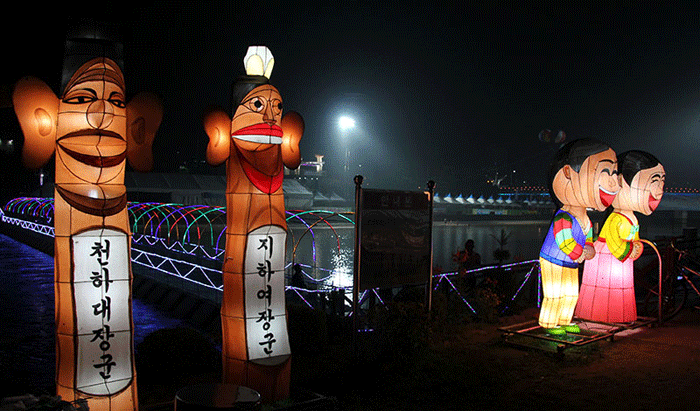
General information on Bonghwa County:
Area: 1,201km² (6% of Gyeongsangbuk-do) about twice the size of Seoul
Population: About 34,000 persons
Cultural Heritage: A total of 89 cultural properties (one national treasure, eight treasures, five important folklore materials and 75 other sites)
Special Products: Pine mushroom, Hanyakwu (Korean medicinal beef), apple, strawberry, red pepper, medicinal herbs, Boksubak (watermelon).

